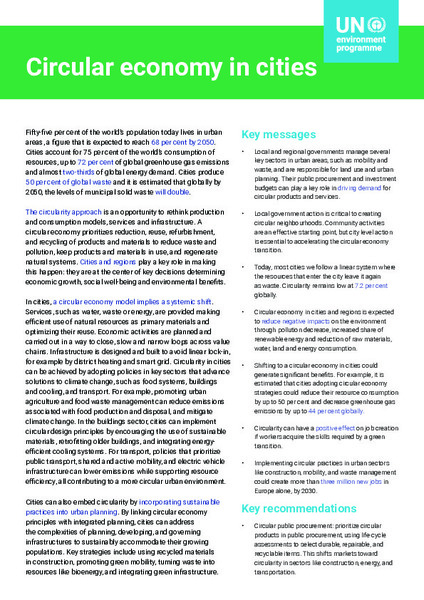| dc.contributor | Climate Change Division | en_US |
| dc.contributor.author | United Nations Environment Programme | en_US |
| dc.date.accessioned | 2024-11-04T07:36:58Z | |
| dc.date.available | 2024-11-04T07:36:58Z | |
| dc.date.issued | 2024-10 | |
| dc.identifier.uri | https://wedocs.unep.org/20.500.11822/46507 | |
| dc.description | In cities, a circular economy model implies a systemic shift. Services, such as water, waste or energy, are provided making
efficient use of natural resources as primary materials and optimizing their reuse. Economic activities are planned and
carried out in a way to close, slow and narrow loops across value chains. Infrastructure is designed and built to avoid linear lock-in,
for example by district heating and smart grid. Circularity in cities can be achieved by adopting policies in key sectors that advance solutions to climate change, such as food systems, buildings and cooling, and transport. | en_US |
| dc.format | pdf | en_US |
| dc.language | English | en_US |
| dc.rights | Public | en_US |
| dc.subject | circular economy | en_US |
| dc.subject | city | en_US |
| dc.subject | urban area | en_US |
| dc.title | Circular Economy in Cities | en_US |
| dc.type | Briefs, Summaries, Policies and Strategies | en_US |
| dc.type | Factsheets, Infographics and Brochures | en_US |
| wd.identifier.sdg | SDG 11 - Sustainable Cities and Communities | en_US |
| wd.identifier.sdg | SDG 12 - Responsible Consumption and Production | en_US |
| wd.topics | Finance and Economic Transformations | en_US |
| wd.identifier.pagesnumber | 2 p. | en_US |


